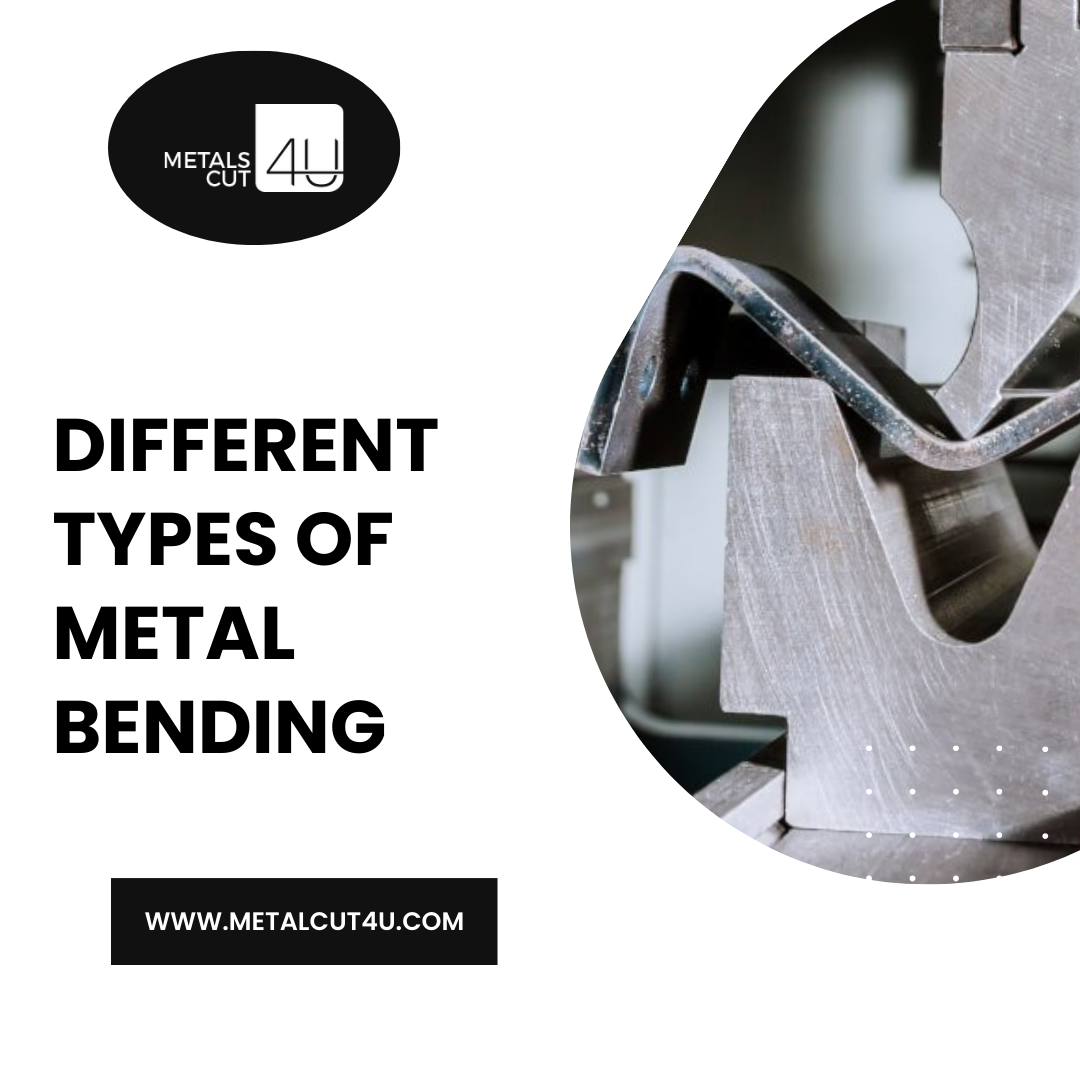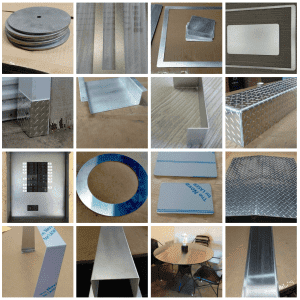Different Types of Metal Bending

Metal bending is a core process in metalworking that shapes metal into essential forms for industries like construction, automotive, and aerospace. By bending flat sheets or rods, we create functional and visually appealing structures.
This process is crucial for manufacturing components with the necessary strength and precision. Modern technology has introduced various methods and tools that make metal bending more efficient and accurate, addressing the unique demands of each application.
In this blog post, we'll explore various metal bending techniques and learn how to bend metal to produce top-quality metal products.
What is Metal Bending?
Metal bending is a crucial manufacturing process that involves shaping metal into various configurations for industrial, commercial, and artistic applications. This process requires precise control and understanding of the properties of the material being manipulated. For creating parts for machinery or architectural components, metal bending is essential in transforming raw metal sheet folding into functional and aesthetic products.
Different Types of Metal Bending
Let's understand how to bend sheet metal in detail:
1. Press Brake: Best Method for Metal Bending
The press brake is a versatile machine for bending metal sheets and plates. It uses a punch and die to create precise bends by applying a controlled amount of force. The press brake is renowned for producing consistent bends over various angles and lengths, making it ideal for simple and complex metal bending tasks.
2. Hydraulic CNC Press Brakes
Hydraulic CNC press brakes are advanced versions of traditional press brakes, including computer numerical control (CNC) systems for enhanced precision and efficiency. These machines can handle complex bending sequences and repeat the same bend accurately. The hydraulic system provides the necessary force, while the CNC system controls the bending process, ensuring precise angle and position.
3. Air Bending
Air bending is a standard metal sheet bending tool where the metal does not touch the bottom of the die. The punch presses the metal partway into the die for various bend angles. This method is less precise than bottoming or coining but is more flexible and requires less force. Air bending is ideal for jobs that require various bend angles without changing the die.
4. Hot Metal Bending Machine
In hot metal bending, metal is heated to a pliable state before applying bending forces. This metal bending technique is useful for stainless steel or titanium. The heating process temporarily reduces the strength of the metal, making it easier to manipulate without cracking or breaking.
5. Universal Metal Bending Machine
The universal metal bending machine is a flexible tool capable of performing multiple bending tasks on various types of metals and shapes. It is beneficial for custom work and prototyping, allowing operators to switch between different bending tools and configurations quickly. This machine is highly valued in workshops that deal with a diverse range of bending requirements.
Discover the strongest metals on Earth by visiting our website for a thorough understanding.
What Makes Metal Easy to Bend?
The ease of bending metal depends on several factors, including the material's flexibility, thickness, and grain structure. Ductile metals, such as aluminum and copper, which are heat-conductive metals, bend more easily than brittle metals like cast iron.
Thinner metal sheets are generally easier to bend than thicker ones. The grain structure can also affect the bending process, with finer grains allowing smoother bends without cracking.
Check out our guide to understand the melting point of metals in detail.
Benefits of Metal Bending
Metal that bends offers numerous benefits:
Creates Complex Shapes: Metal that bends can form intricate shapes and angles.
Minimizes Material Waste: The process is efficient and reduces material wastage.
Ensures High Precision: Offers accuracy and consistency, essential for mass production and custom work.
Enhances Strength and Rigidity: Bending improves the structural integrity of metal components, which is beneficial for construction and other applications.
Disadvantages of Metal Bending
Induces Stress and Hardening: Metal bending can cause stress and strain hardening, leading to potential cracking or distortion.
Requires Specialized Equipment: The process demands specific machinery and skilled operators, increasing production costs.
Need Additional Treatments: Some metals require heating or other treatments for effective bending, adding complexity.
Best Tools for Metal Bending
The best tools for metal bending include press brakes, hydraulic CNC machines, and universal bending machines. Each tool offers unique advantages for different bending tasks. Press brakes are ideal for high-precision bending, while hydraulic CNC machines provide automation and accuracy for complex projects. Universal bending machines offer flexibility for custom work and are essential in workshops that handle various bending needs.
Materials Suitable for Metal Bending
Several materials are well-suited for sheet metal folding tools, including:
Aluminum: It is known for its flexibility and ease of bending. Moreover, aluminum is commonly used in aerospace and automotive applications.
Steel: Available in various grades, steel is a versatile material for bending, particularly in construction and manufacturing.
Copper: Copper is highly malleable and conductive, which is ideal for electrical and plumbing applications.
Brass: A combination of copper and zinc, brass offers good malleability and corrosion resistance, making it suitable for decorative and functional components.
CONFIGURE IN 4 EASY STEPS
What is the Metal Bending Process?
The types of bending process involves several crucial steps:
Material Selection: Choosing the appropriate metal based on its properties and the desired bend.
Tool Setup: Setting up the bending tools, such as a press brake or bending machine.
Positioning: Placing the metal in the correct position for bending.
Bending: Applying force to the foldable sheet metal to achieve the desired angle and shape.
Quality Check: Inspecting the bent metal for accuracy and defects.
This process may vary depending on the bending method used and the project's specific requirements.
Conclusion
In conclusion, we explored various metal bending techniques, from the workhorse press brake to specialized methods like hot bending. We saw how these processes transform raw metal into the intricate shapes that define our world. From construction marvels to sleek electronics, metal bending plays a vital role. Now, you have the knowledge to navigate the different bending methods and choose the right one for your project.
If you need help, contact MetalCut4U. We provide specialized metal cutting, bending, and welding services tailored to your needs. With our expertise and state-of-the-art equipment, we deliver precise and high-quality metalwork for various applications, from industrial components to custom projects. Our commitment to excellence ensures that each piece produced meets the highest strength, accuracy, and aesthetic appeal standards.
Call 440-822-6381 for customized solutions in metal cutting, bending, and welding services.
FAQ's
1. Can Anyone Bend Metal?
While basic metal bending can be done with simple tools and techniques, achieving precise and high-quality bends requires specialized equipment and expertise.
2. What is the Best Metal for Bending?
Aluminum is considered one of the best metals for bending due to its flexibility and relatively low melting point. It is easy to work with and can achieve tight bends without cracking.
3. What is the Hardest Metal to Bend?
Titanium is among the hardest metals to bend due to its high strength and low ductility.
4. Does Heating Up Metal Help It Bend?
Yes, heating metal reduces its strength and increases its flexibility, making it easier to bend. This process, known as hot bending, is commonly used for metals that are difficult to bend at room temperature.
5. What is the Thing Used to Bend Metal?
Standard tools for bending metal include press brakes, hydraulic bending machines, and universal bending tools. Each tool is designed for specific types of bending tasks and materials.
6. What is the Metal Bending Method?
Metal bending methods vary depending on the desired outcome and the properties of the metal. Standard methods include press brake bending, air bending, and hot bending.
